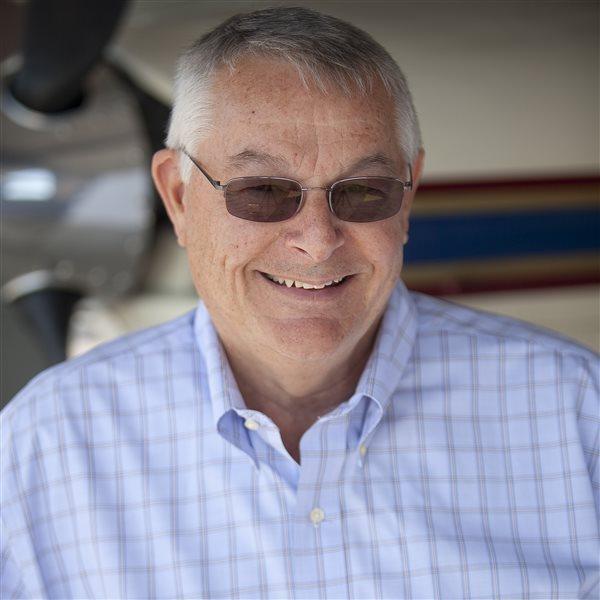Proficiency: Betting your life on fuel gauges
Seventy pilots are expected to run out of fuel this year

There were 67 incidents classified “Flight Planning and Decision-Making; Fuel Management” in 2013, nine of them fatal. The trend was going in the right direction at the time. In 2012 fuel management accidents—running out of gas, mismanaging the fuel system, or fuel contamination—had decreased 18 percent over the previous year, according to ASI’s Joseph T. Nall Report. In 2013 the number fell another 16 percent.
Early data indicate the fuel management accident total will hover above 70 in 2014 and 2015 once analysis is complete. More than half in 2013 were blamed on flight-planning deficiencies. A look at individual accidents from 2009 to 2011 indicates that not only are some pilots not planning to land with an hour of fuel in the tanks, as the Air Safety Institute suggests—they are not planning at all.
One pilot reported to his passengers that he was sure he had enough for a five-minute flight. He didn’t, and crashed. Another was preparing his aircraft for storage and wanted to burn all the fuel out of the tanks so fuel lines would not gum up with mogas during a hot summer. He did empty the tanks, but was in the air at the time and not close enough to an airport. He crashed.
One pilot reported to his passengers that he was sure he had enough fuel for a five-minute flight.A helicopter instructor told his student there was enough gas to make it to the next airport, given that neither he nor his student had a credit card that would work at the self-serve pump they found at an outlying airport. It wasn’t true, and the engine quit. The autorotation that followed resulted in a hard landing that damaged the helicopter.
Another, trying to be a good pilot, limited his fuel to three hours for a five-hour trip because he didn’t want to be above the aircraft’s maximum gross weight, and planned to stop along the way for fuel. He passed one airport with fuel, then another, until finally it seemed he could make it to his destination. He couldn’t and three people on the aircraft died, including the pilot. In his clipboard was an information page for an Iowa airport just eight miles ahead.
It goes on. What do you do after you refuel? That’s right, you check the tanks to see if the airport fuel supply has water in it. Double-checking would have saved our next pilot. He ordered fuel, thought it had been delivered, and took off. It hadn’t. There are so many things that could be noted here. What about the fuel draining recommended after every refueling? Pouring the sample back in the tank might have called the pilot’s attention to the fuel levels. What about the run-up prior to takeoff during which time the checklist mentions fuel, such as, “Fuel on fullest tank”? Would that not have required looking at the gauges?
Sometimes the guilty party justifies his or her decision by noting that fuel gauges are faulty and therefore there “could be” gas in there. Yet another pilot had an electronic system to accurately indicate fuel quantity, but reset it improperly after refueling.
Another limited his fuel to three hours for a five-hour trip because he didn’t want to be over the aircraft’s maximum gross weight.Now to the preachy portion of this article, a sermonette about following the Air Safety Institute’s suggestion that you land with an hour of fuel in your tanks. Most of you reading this will do that, because you read safety articles and make mental notes about other pilots’ problems.
The FAA does not require aircraft to land with an hour of fuel. You can fly under visual conditions and have only enough fuel to fly at cruise speed another 30 minutes in daytime, or 45 minutes at night.
Those flying on instrument flight plans have an extra incentive—a what-if scenario. In the air, the instrument pilot can’t help but think, What if I am told to hold? What if there is traffic backed up at my destination airport? What if I get a new routing as soon as I start to taxi at the departure airport that is longer than the route I had planned? That sort of scary realization helps to encourage IFR pilots to carry more fuel than is required. Yet all they legally need is enough fuel to reach the intended destination, then fly to the alternate airport, and still have 45 minutes of fuel left.
Can you imagine how frightening 30 minutes or even 45 minutes of fuel looks on your fuel gauge? The needle will be very close to empty. Why not aim for a fuel gauge that is a more comforting sight?
One flight instructor suggests to his students that an hour of fuel is a lot safer than FAA minimums, and asks them to estimate how much fuel is required for 30 minutes of flight. The student realizes the amount of fuel is about five gallons for most trainer aircraft, distributed between two tanks, and that the fuel gauges are going to bounce on Empty. “When I fly I plan on two-hour legs,” he said. “That’s all my bladder can stand.”



